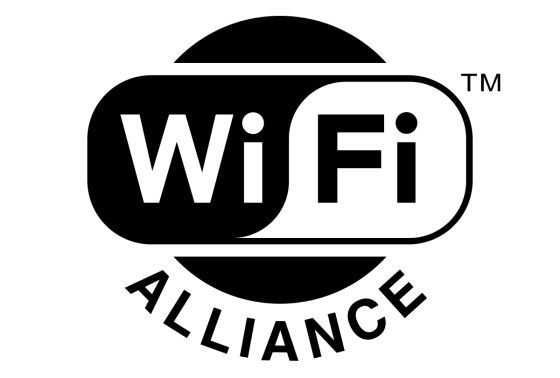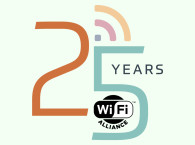
Founded by six companies to develop and validate multi-vendor interoperability, Wi-Fi Alliance has grown into an organization of nearly 650 companies and a driving force in Wi-Fi’s ascent to one of the world’s most-loved and widely used technologies. With billions of devices in use today, Wi-Fi exemplifies the value of industry-wide standards and multi-vendor collaboration to support technology adoption.
“Wi-Fi Alliance nurtures a unique environment where our industry comes together to collaborate on interoperability, and to advance Wi-Fi into new market segments and applications,” says Edgar Figueroa, president and CEO of Wi-Fi Alliance. “Healthy debate and effective collaboration are Wi-Fi Alliance hallmarks that ultimately result in solutions that positively impact the economy, business strategy, and people’s quality of life.”
“No other technology organization has been more successful than Wi-Fi Alliance in driving industry collaboration for the benefit of users,” says Craig Mathias, Principal of Farpoint Group. “The essential ubiquity of Wi-Fi is a key result of the work of the Alliance and its members.”
A passion for great technology
Wi-Fi’s evolution since 1999 has been marked by continued advancement and a commitment to legacy interoperability. Far from the original 11 Mbps data rate offered in the first Wi-Fi Certified products, today’s most advanced Wi-Fi devices can deliver as much as 1 Gbps of data rate when communicating with other current-generation technology, and can also connect to legacy devices – preserving value for users over the long term.
Just a few years after its proliferation in laptops and access points, and propelled by Wi-Fi Alliance technologies addressing ease of use and quality of service, Wi-Fi proliferated in smartphones and consumer electronics. Device-to-device connectivity was introduced with Wi-Fi Direct, easy-to-use display with Miracast, and seamless access to Wi-Fi hotspots with Passpoint.
Today, Wi-Fi is in broad use in homes, enterprises, public spaces and hotspots. Fifteen years since its origin, the numbers are testament to the technology’s value:
• More than 22,000 products have been Wi-Fi CERTIFIED, including more than 4,000 phones and tablets, 6,000 access points, 1,100 printers, and 3,500 televisions.
• Consumer demand for Wi-Fi has continued to grow, with sales figures of about two billion Wi-Fi devices sold in 2013 alone and a forecast exceeding four billion in 2020.
• Wi-Fi is used in 25 percent of homes around the world.
“Many of the most popular cultural trends and technologies from the last 15 years got their start and maintained their popularity because of Wi-Fi,” says Kevin Fitchard, Senior Writer at Gigaom. “Wi-Fi has not only been a source of tremendous capacity, but also an incredible driver of innovation.”
Academic research indicates that the combination of Wi-Fi data offload and the benefits of Wi-Fi-enabled homes created more than US $48 billion in economic surplus in the United States alone.
“Wi-Fi has significantly improved the lives of people and societies all over the world over the last 15 years, but we are just getting started,” said Greg Ennis, Vice President of Technology for Wi-Fi Alliance. “Wi-Fi and other technologies from Wi-Fi Alliance will be front and center for many years to come, connecting people and things in ways we can only imagine today.”
The Wi-Fi Alliance roadmap features a number of key elements that will support the proliferation of the organization’s certified technologies into a number of new segments and applications.
• New frequency bands will deliver just the right kind of connection. WiGig Certified will deliver interoperable products supporting multiple-gigabit data rates for room-range connectivity in 60 GHz in 2016. Wi-Fi Alliance has also begun work to define certification programs based on 802.11ah and 802.11af, for operation below 1 GHz to support longer-range, very-low-power connectivity.
• Wi-Fi will connect new types of devices to each other and the internet. With the Internet of Everything emerging as the next major wave of connected innovation, Wi-Fi’s reach will extend into the smart home, connected cars, sensing and control networks, and much more. Already the technology of choice for its long-lived compatibility and robust security, advances in power management, ease of use, and common foundations for service discovery and enablement are setting the stage for massive growth of the Wi-Fi Internet of Everything.
• Core Wi-Fi technologies will continue to advance. The Wi-Fi that consumers and enterprises have come to rely on every day keeps getting better. Wi-Fi Alliance members are bringing new power saving mechanisms to Wi-Fi CERTIFIED products, improving the mobility experience, and much more. An update to Wi-Fi CERTIFIED ac, the most advanced Wi-Fi available, will validate interoperability of several performance-enhancing features in late 2015.
www.15yearsofwi-fi.com | www.wi-fi.org






